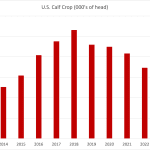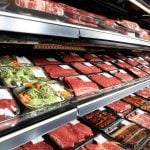Some farm marketing advisers say this past year has shown the value of
options as a risk management tool, while highlighting the dangers of
forward sales contracts and the limitations of futures contract hedges.
“Options do work well in circumstances like this where there does seem
to be a dynamic situation brewing and the upside could be substantial,
but there’s a price now you don’t want to pass up,” said Ken Ball of
Benson Quinn GMS.
Mike Jubinville of Pro Farmer Canada agreed.
Read Also

Canola used in only quarter of Canadian biofuel
Less than one-quarter of the biodiesel and renewable diesel used in Canada in 2024 was made from canola oil feedstock
“You can save the upside potential on a previous cash sale or lock in a
basement price after the market has rallied,” said Jubinville.
While forward sales contracts and futures contracts usually offer
farmers good revenue protection, this year’s widespread crop problems
undermined their effectiveness, and in some cases made them dangerous.
On the other hand, options, both calls and puts, don’t obligate the
producer to accept a set price or deliver a set amount of grain. They
can allow producers to protect against downside risks while waiting for
market prices to improve. They allow producers to make cash or futures
sales and still have the ability to catch a rising market. They also
allow farmers to offset crop losses.
Options are less used than futures and forward sales contracts. Ball
said options trade on the Winnipeg Commodity Exchange over the past
year has been disappointing. Options are more expensive than futures or
forward sales contracts, Jubinville said, but in years like this, they
show their value.
Many farmers relied only on the cash market this year, Ball said, and
did not use risk management tools. Many farmers were caught in forward
sales contracts last year and had to buy their way out. They didn’t
want to repeat the experience, he said.
Producers also viewed them as more risky than normal because of drought
and the rising market.
“We weren’t recommending a lot of hedging this year,” said Ball.
“We felt the situation was too dangerous and too dynamic. This year
there was very little hedging. It was almost non-existent.”
Ball said the few farmers who bought futures positions quickly reacted
when they started having crop production problems or prices started
climbing. Unlike forward sales agreements, farmers can quickly get out
of a bad futures position. Farmers who had futures positions at prices
lower than where the market appeared to be moving were able to get out
and capture some of the later market gains.
“In the futures market, if things are starting to move, you can just
cover your position immediately, in a matter of seconds,” said Ball.
Options turned out to be useful tool in some circumstances this year.
Put options are often used like insurance, protecting against a price
plunge while not locking in a price or obligation to deliver. If the
cash market rises, farmers can sell their crops and let the options
expire. That insurance purpose worked as well this year as any, because
it cut the downside potential.
As with any insurance there is a cost, or premium, to buy options. The
premium is lost if the option is not exercised, but analysts say
farmers should consider that because, as with insurance, you hope you
don’t have to use the policy.
Ball said options also helped farmers who wanted to lock in some prices
early in the year, but didn’t want to lose the market’s upside
potential.
He said some bought call options between January and April because
there were signs prices could dramatically rise in the long term, but
they also wanted to be able to take advantage of any short-term summer
rallies in the futures market. With the call options in place, “you can
go ahead and confidently sell on the futures market. And if prices do
go higher, you’ve already bought the call options at the lower level,
so you’re protected in the marketplace.”
Options can also be used to mitigate losses in the field. Farmers who
think they will produce 200 tonnes of canola, can buy 200 tonnes of
call options in the spring. If the crop is wiped out as part of a
widespread weather problem, such as this year’s drought, and market
prices rally in response, the options will deliver the returns Mother
Nature denied in the field.
“They become the crop you don’t have,” said Ball. “They compensate you
for the loss in the field.”
Jubinville said farmers should take options seriously, even if they can
seem expensive.

















